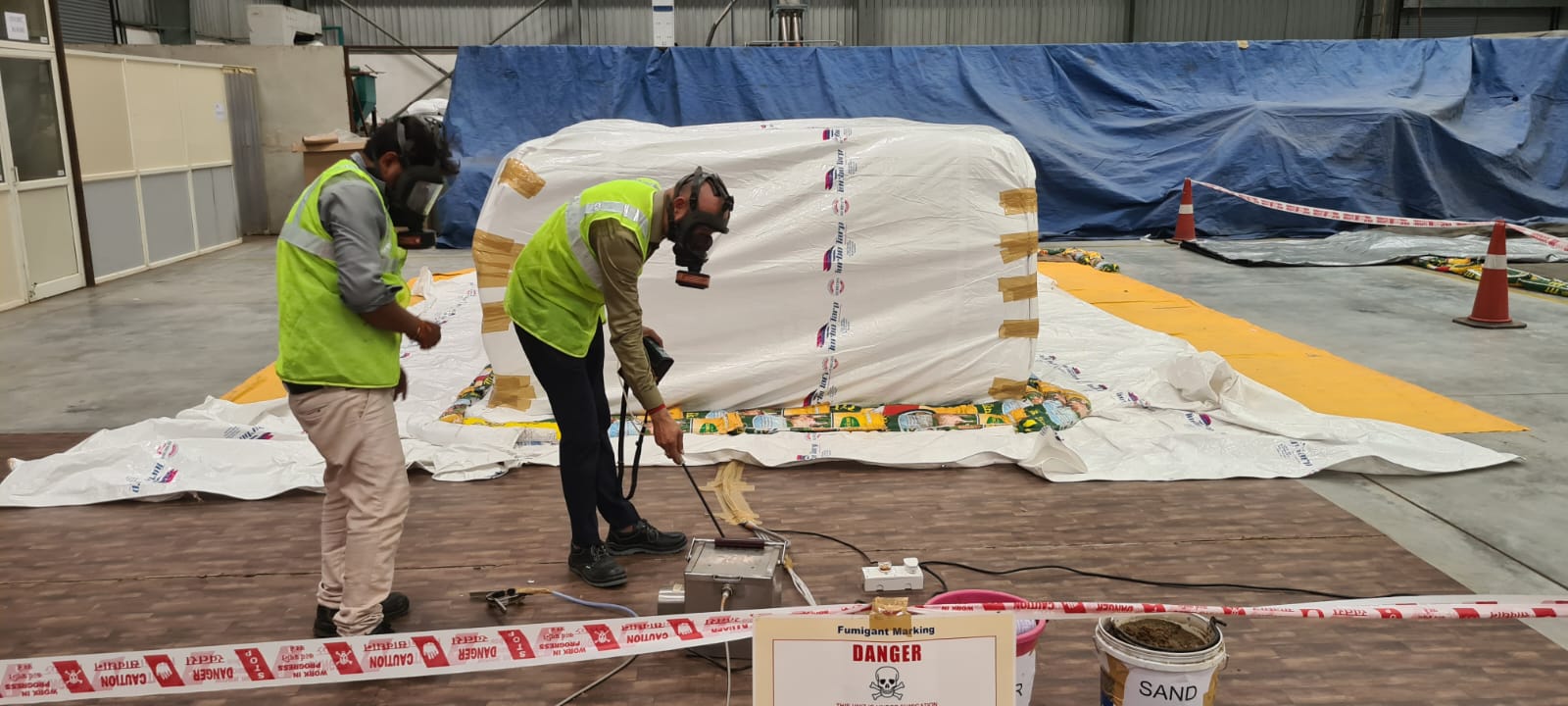Stack Fumigation
Stack fumigation is a method used to control pests and insects in stored commodities, such as grains, seeds, or stored food products. It involves the application of fumigants within the storage facility to eliminate or reduce the population of pests.
1. Preparation: Before fumigation, the storage facility must be properly sealed to prevent the fumigant from escaping. This includes closing all openings, such as doors, windows, and ventilation systems, as well as inspecting and repairing any leaks or gaps.
2. Fumigant selection: The appropriate fumigant is chosen based on the type of pest and the specific requirements of the stored commodity. Common fumigants used in stack fumigation include phosphine gas (generated from aluminum phosphide tablets or pellets), methyl bromide, sulfuryl fluoride, and carbon dioxide.
3. Application: The fumigant is introduced into the storage area by placing fumigation tablets or injecting the gas directly into the stack. The fumigant disperses through the commodity, penetrating the grain or other materials, reaching the pests in all stages of their lifecycle.
4. Exposure period: The storage facility is sealed for a specified period to allow the fumigant to act on the pests. The duration of the exposure period depends on various factors, including the fumigant used, temperature, humidity, and the target pest.
5. Aeration:After the exposure period, the storage facility is ventilated to remove the fumigant and make the environment safe for workers and consumers. Aeration is typically achieved by using fans or natural air circulation.
6. Monitoring: It's important to monitor the storage facility after fumigation to ensure that the pests have been effectively controlled and that the residual fumigant levels are within acceptable limits. This may involve sampling the stored commodities and conducting tests to confirm the absence of pests and safe fumigant levels.
